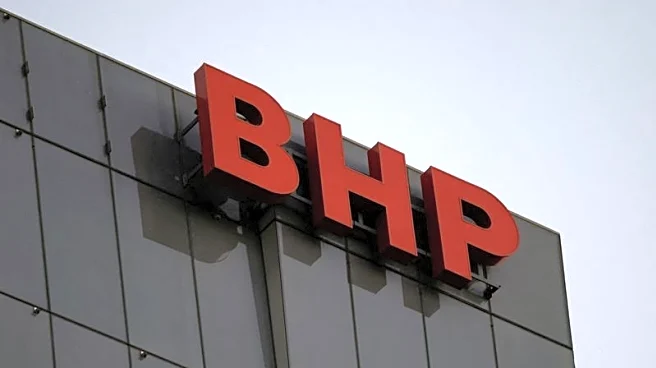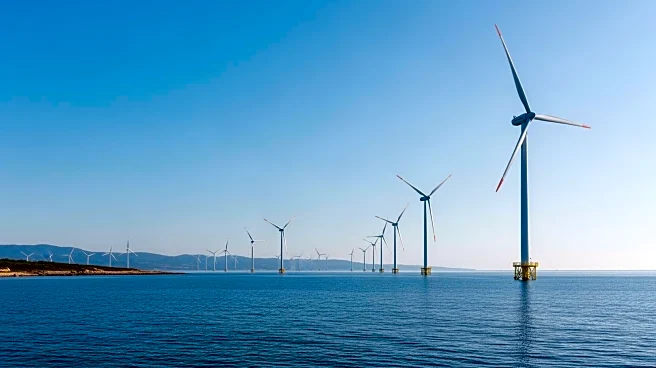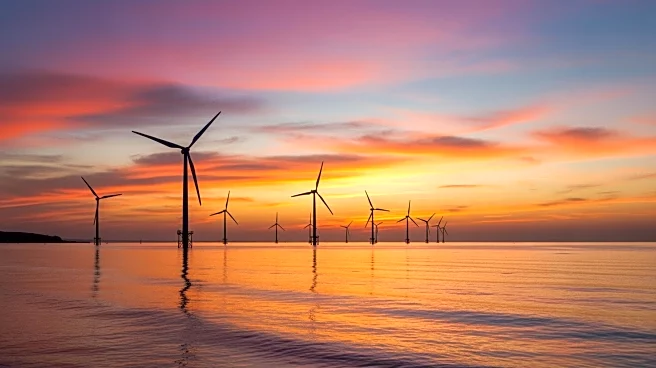What's Happening?
BHP, the world's largest listed mining company, has expressed optimism regarding global iron ore demand despite acknowledging a slowdown in Chinese economic growth. CEO Mike Henry stated that macro-economic
signals for commodity demand remain resilient, with global growth forecasts improving. This comes as BHP reported first-quarter iron ore production slightly below expectations due to maintenance activities at Port Hedland. The company produced 70.2 million tons of iron ore from its Western Australian operations, slightly below the consensus estimate of 71.55 million tons. Despite this, BHP increased higher-value lump iron ore sales by five percent and maintained its fiscal 2026 output guidance. Additionally, copper production rose by four percent, with output forecasts unchanged for 2026. BHP is increasing its copper investments due to the metal's importance in renewable energy transitions. The company also reported progress on Canada's Jansen potash project, with Stage 1 73% complete and Stage 2 at 13% completion.
Why It's Important?
BHP's optimism amid a Chinese economic slowdown is significant as it highlights the resilience of global commodity demand, which is crucial for industries reliant on raw materials. The company's ability to maintain production levels and increase sales of higher-value products suggests a strategic approach to navigating economic uncertainties. The focus on copper investment aligns with the growing demand for renewable energy solutions, positioning BHP to benefit from the transition to cleaner energy sources. The progress on the Jansen potash project indicates potential future contributions to global agricultural markets, which could enhance food security. Overall, BHP's actions and outlook may influence market perceptions and investor confidence in the mining sector.
What's Next?
BHP's continued investment in copper and potash projects suggests a strategic focus on diversifying its portfolio to mitigate risks associated with fluctuating demand for iron ore. The completion of maintenance activities at Port Hedland and the advancement of the Jansen potash project are likely to support future production increases. Stakeholders, including investors and industry analysts, will be monitoring BHP's ability to maintain its production guidance and capitalize on market opportunities. The company's performance may also prompt reactions from competitors, potentially influencing global commodity prices and supply chain dynamics.
Beyond the Headlines
BHP's strategic investments in copper and potash reflect broader industry trends towards sustainability and resource diversification. The emphasis on renewable energy transition and agricultural inputs highlights the company's commitment to addressing global challenges such as climate change and food security. These efforts may contribute to long-term shifts in mining practices and resource management, influencing regulatory frameworks and corporate strategies. Additionally, BHP's ability to navigate economic slowdowns and maintain production levels could serve as a model for other companies facing similar challenges.












